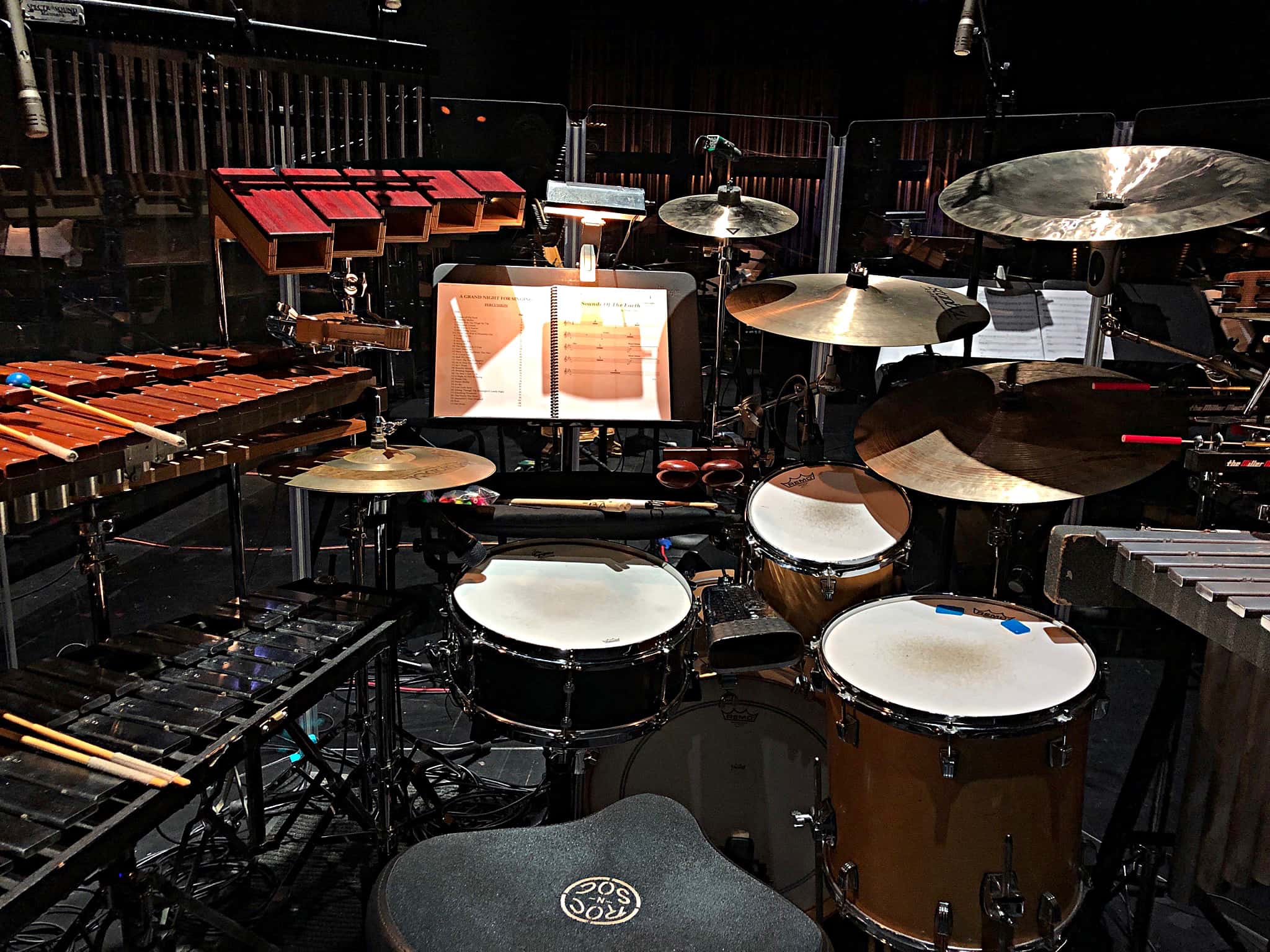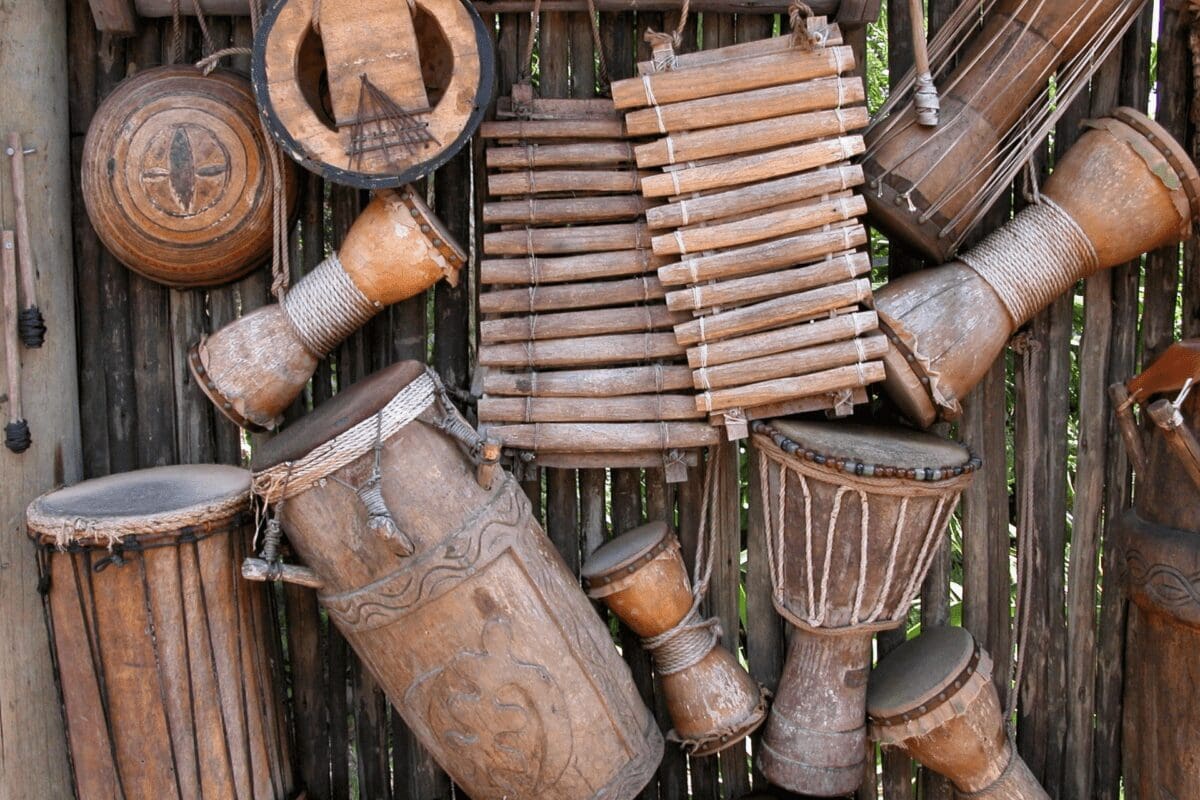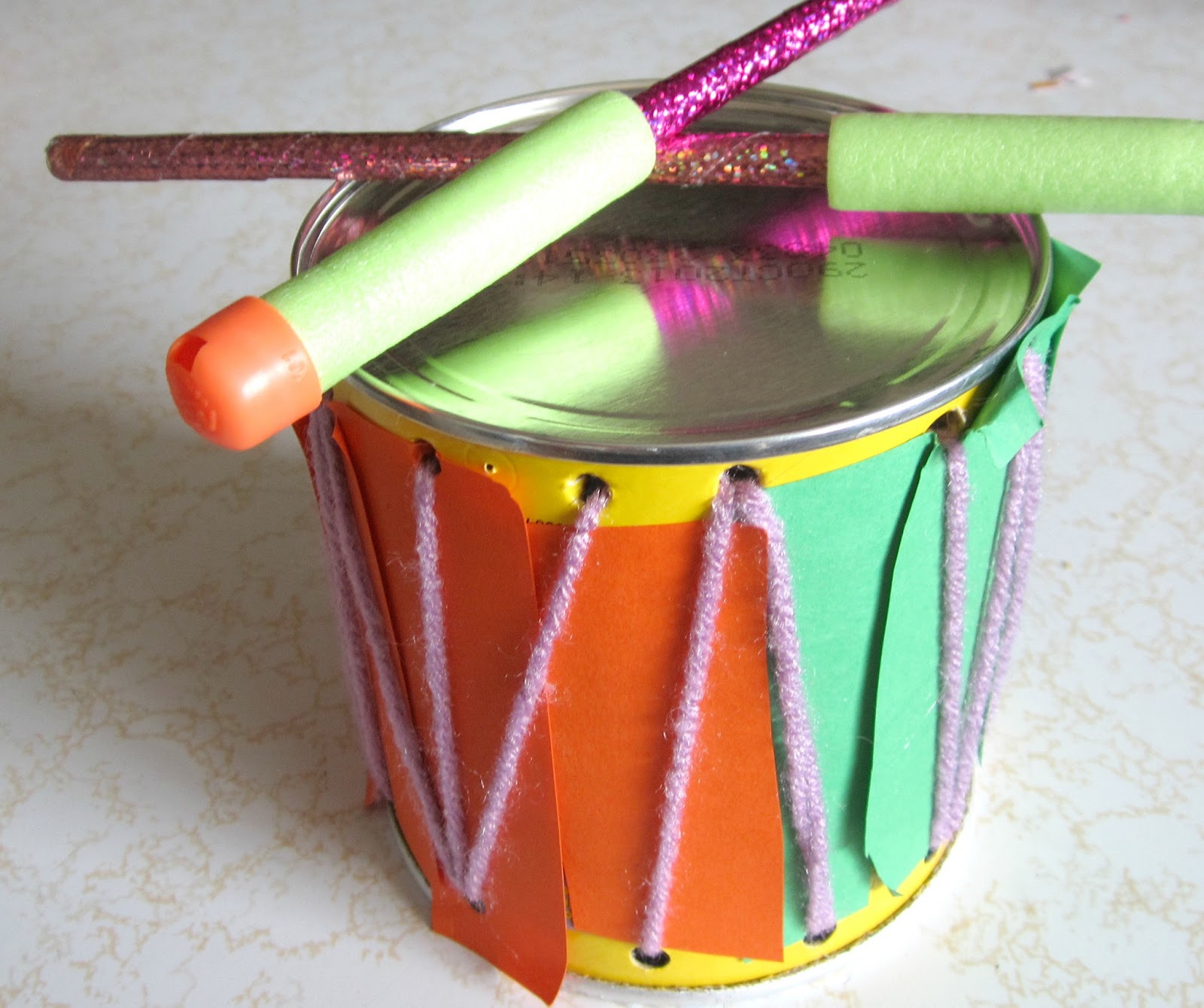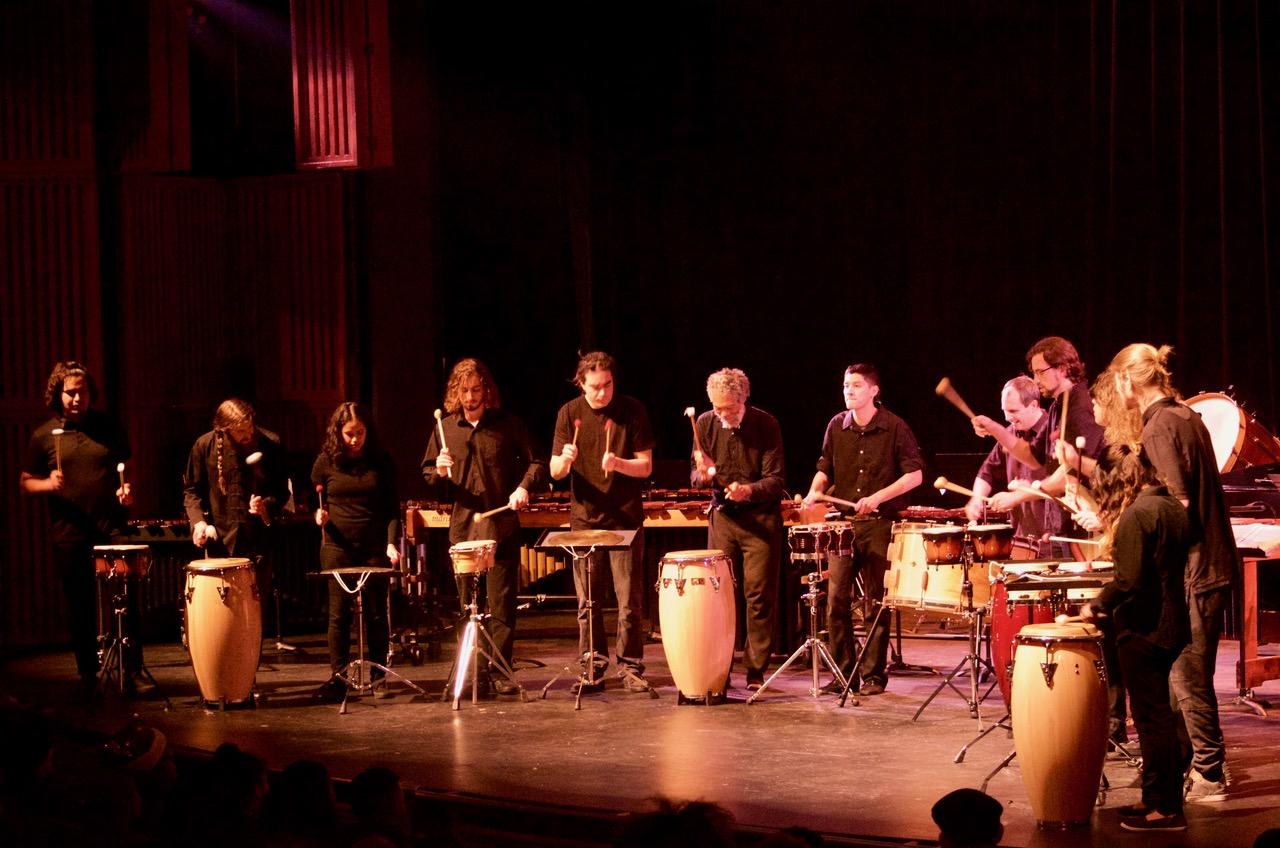Home>Instruments>Percussion Instruments>What Percussion Instruments Produces Indefinite Pitch


Percussion Instruments
What Percussion Instruments Produces Indefinite Pitch
Published: January 16, 2024
Discover the range of percussion instruments that produce indefinite pitch, including drums, cymbals, and shakers. Explore the diverse sounds and rhythmic possibilities with these versatile instruments.
(Many of the links in this article redirect to a specific reviewed product. Your purchase of these products through affiliate links helps to generate commission for AudioLover.com, at no extra cost. Learn more)
Table of Contents
Introduction
Percussion instruments bring rhythm, energy, and excitement to music. From the thunderous beats of the bass drum to the shimmering crashes of cymbals, percussion instruments play a crucial role in adding depth and texture to musical compositions. When it comes to pitch, percussion instruments can be broadly categorized into two groups: those that produce definite pitch and those that produce indefinite pitch. In this article, we will focus on percussion instruments that produce indefinite pitch.
Indefinite pitch refers to sounds that do not have a specific or identifiable musical note. Unlike instruments such as pianos or trumpets that can produce precise pitches, percussion instruments with indefinite pitch create a range of sounds without a discernible musical tone. Instead, they produce unique and diverse sounds that contribute to the rhythmic and textural elements of the music.
Understanding the variety of percussion instruments that produce indefinite pitch can help musicians, enthusiasts, and music students explore the vast array of sounds and effects available in this category. Whether you are a drummer, a percussionist, or simply curious about the world of percussion, delving into the world of instruments with indefinite pitch can broaden your musical knowledge and appreciation.
In the following sections, we will explore some of the most common percussion instruments that fall into the category of indefinite pitch. We will discuss their characteristics, playing techniques, and the unique sounds they produce. So, let’s dive in and discover the fascinating world of percussion instruments with indefinite pitch.
Overview of Percussion Instruments
Percussion instruments are a diverse and versatile family of musical instruments that produce sound through the use of striking, shaking, or scraping. They come in various shapes, sizes, and materials, each contributing its own distinct sound and character to musical compositions. Percussion instruments can be broadly classified into two main categories: those that produce definite pitch and those that produce indefinite pitch.
Definite pitch percussion instruments, such as the marimba or timpani, produce notes with a specific, identifiable pitch. These instruments are tuned to specific musical frequencies and can play a melodic role in a musical composition. On the other hand, percussion instruments with indefinite pitch produce a variety of sounds without a discernible musical note. They provide rhythmic and textural elements to music, adding depth and energy.
Percussion instruments can be found in various cultures and musical traditions worldwide, from tribal drums and shakers to orchestral cymbals and tambourines. They are essential in many genres of music, including classical, jazz, rock, pop, and world music.
In addition to their sonic qualities, percussion instruments are also visually striking, with intricate designs and materials that contribute to their unique identities. From the sleek metal surfaces of cymbals to the vibrant patterns on djembes and tambourines, percussion instruments are not only auditory delights but also visual expressions of art.
Playing techniques for percussion instruments can vary widely. Some instruments are struck using drumsticks, mallets, or the hands, while others are shaken, scraped, or rubbed. The diverse range of techniques and sounds allows percussionists to create complex rhythms and captivating performances.
Whether as a solo instrument or part of an ensemble, percussion instruments bring energy, excitement, and rhythm to musical compositions. They add depth, texture, and dynamic expression, ensuring that no song or performance is complete without the presence of percussion. Understanding the different types of percussion instruments and their unique characteristics allows musicians and enthusiasts to explore the wide world of percussive sounds and create captivating musical experiences.
Definition of Indefinite Pitch
In the realm of music, pitch refers to the perceived frequency of a sound. It determines whether a sound is high or low, and it is a fundamental element in creating melodies and harmonies. However, there are certain percussion instruments that do not produce a specific or identifiable musical note. These instruments are known as percussion instruments with indefinite pitch.
Indefinite pitch can be defined as a range of sounds that do not have a precise musical note. Instead of producing a specific frequency or pitch, these instruments generate a wide array of unique and diverse sounds. These sounds contribute to the rhythmic and textural elements of music, adding depth and complexity to compositions.
Percussion instruments with indefinite pitch produce a variety of non-tonal sounds. These sounds can have characteristics such as a deep booming sound, a sharp metallic clang, a buzzing resonance, or a rattling effect. While these sounds do not have a designated pitch in the traditional sense, they play an integral role in creating a rich and vibrant musical landscape.
The lack of definite pitch in these instruments allows percussionists to focus on other aspects of music-making, such as rhythm, dynamics, and texture. They provide a rhythmic foundation and a sonic backdrop, enhancing the overall musical experience without the constraints of specific notes or melodies.
It is important to note that percussion instruments with indefinite pitch are not limited to a single category. They can include a wide variety of instruments, such as drums, cymbals, shakers, and tambourines. Each instrument within this category has its own unique sound and playing technique, contributing to the overall palette of percussive sounds in a musical composition.
By incorporating percussion instruments with indefinite pitch into musical arrangements, composers and musicians can create an immersive and diverse sonic experience. These instruments add a sense of spontaneity and unpredictability to the music, allowing for creative expression and experimentation. They are an essential component of the percussion family, offering a world of sounds beyond traditional melodic notes.
Factors Affecting Pitch in Percussion Instruments
Pitch is a fundamental aspect of music, and while certain percussion instruments are known for producing indefinite pitch, there are still factors that can influence the perceived pitch of these instruments. Understanding these factors can help percussionists and musicians manipulate the sounds they produce and create a desired musical effect. Here are some important factors that affect pitch in percussion instruments:
- Size and Shape: The size and shape of a percussion instrument can significantly impact its pitch. Instruments with larger dimensions tend to produce lower, deeper sounds, while smaller instruments tend to produce higher, sharper sounds. For example, a large bass drum will produce a deep, resonant sound, while a small tambourine will produce a higher, crisper sound.
- Material: The material from which a percussion instrument is constructed can also affect its pitch. For example, a metal cymbal will produce a brighter and more metallic sound compared to a wooden drum. The density and thickness of the material can also influence the pitch, with thicker materials often producing lower pitches.
- Tension and Tightness: The tension or tightness of a drumhead or membrane on a percussion instrument can alter its pitch. Tightening or loosening the drumhead can raise or lower the pitch respectively. This is commonly done with instruments like the snare drum or timpani, allowing percussionists to tune the instrument to specific notes or pitches.
- Playing Technique: The playing technique used on a percussion instrument can also impact the perceived pitch. Striking a drum or cymbal with varying force or using different parts of a mallet can create different sound qualities and varying levels of pitch perception. Additionally, the speed, angle, or location of the strike can also influence the pitch of the produced sound.
- Resonance and Decay: The resonance and decay of a sound can contribute to the perception of pitch in percussion instruments. Some instruments, such as drums or tambourines, have a shorter decay time, creating a more percussive and indistinct pitch. Others, like cymbals or gongs, have a longer resonance and decay, allowing for a more sustained and perceivable pitch.
It is important to note that while these factors can influence the perceived pitch of percussion instruments, they are meant to be explored and utilized creatively. Percussionists often experiment with different combinations of instruments, techniques, and playing styles to achieve specific musical effects. The variation and diversity in pitch among percussion instruments with indefinite pitch allow for a wide range of expressive possibilities and contribute to the rich tapestry of percussive sounds in music.
Percussion Instruments with Indefinite Pitch
Percussion instruments with indefinite pitch offer a wide range of unique sounds and textures to music. These instruments, while not producing specific musical notes, contribute to the rhythmic and textural elements of a composition. Let’s explore some common percussion instruments that fall into the category of indefinite pitch:
-
Bass Drums:
Bass drums are large, deep drums that produce a low, resonant sound. They are typically played with a mallet or pedal and are commonly found in marching bands, orchestras, and rock music. The booming, thumping sound of the bass drum provides a strong rhythmic foundation in a wide range of musical genres.
-
Cymbals:
Cymbals, such as crash cymbals and hi-hats, are metallic percussion instruments that create a variety of shimmering, crashing, and hissing sounds. When struck or clashed together, they emit a broad spectrum of frequencies without a specific pitch. Cymbals are widely used in orchestras, jazz ensembles, and rock bands, adding dynamic accents and dramatic flourishes to the music.
-
Tambourines:
Tambourines are handheld instruments consisting of a circular frame with jingles or small cymbals attached to it. When shaken, struck, or tapped, they create a rattling and jingling effect. Tambourines contribute a percussive and lively quality to music, often used in folk, pop, and world music genres.
-
Claves:
Claves are wooden percussion instruments consisting of two cylindrical sticks that are struck together. They produce a sharp, clicking sound that provides a steady rhythm and adds a distinctive percussive element to various styles of music, including Latin, Afro-Cuban, and jazz.
-
Rainsticks:
Rainsticks are long, hollow tubes filled with small pebbles or beads. When tilted or rotated, they create a gentle, soothing sound reminiscent of falling rain. Rainsticks are often used in ambient music, soundscapes, and meditative compositions, adding an ethereal and atmospheric quality.
-
Shakers:
Shakers are handheld percussion instruments that produce a rhythmic shaking sound. They are typically filled with small objects, such as seeds or beads, which create a gentle rattling when shaken. Shakers come in various shapes and sizes and are used in a wide range of musical genres, including folk, Latin, and pop.
These are just a few examples of the many percussion instruments with indefinite pitch. Each instrument offers its own distinct sound and can be used creatively to enhance the rhythmic and textural elements of music. Percussionists and musicians can explore the vast array of percussive sounds provided by these instruments and incorporate them into their compositions, adding depth, energy, and a unique sonic character.
Bass Drums
Bass drums are powerful and commanding percussion instruments that produce a deep, resonant sound. Also known as kick drums, they are typically the largest drums in a percussion ensemble or drum set. Bass drums are played using a pedal or a large mallet, and their distinctive booming sound provides a strong rhythmic foundation in various musical genres.
The construction of a bass drum consists of a large drumhead stretched over a hollow cylindrical shell. The size of the drumhead and shell contributes to the pitch and volume of the sound produced. Bass drums can vary in diameter, ranging from 16 inches to over 40 inches, with larger diameters producing lower frequencies and deeper tones.
To play the bass drum, percussionists use a pedal attached to a mechanical beater. By pressing the pedal with their foot, they control the striking force and speed of the beater hitting the drumhead. This mechanism allows for precise control over the dynamics and articulation of the sound produced.
In orchestral music, bass drums are often used to emphasize climactic moments, create dramatic effects, and enhance the overall impact of the ensemble. Their deep, rumbling tones add a sense of power and intensity to compositions. In marching bands and drum corps, bass drums are a crucial component of the rhythm section, providing a steady and driving pulse to the music.
In modern popular music genres such as rock, metal, and electronic music, bass drums play a central role in driving the rhythm and creating a powerful foundation for the other instruments. With the use of double bass pedals or multiple bass drums, percussionists can execute complex and fast-paced patterns that add intensity and energy to the music.
The sound of a bass drum can be further manipulated by applying various muffling techniques. Muffling involves dampening the drumhead to control the sustain and resonance, resulting in a shorter, focused tone or a distinctive thud-like sound. This technique is often used in recording studios and live performances to achieve the desired tonal characteristics for different musical styles.
Overall, bass drums are essential percussion instruments that provide a commanding presence and deep rhythmic foundation in a wide range of musical genres. From orchestras to marching bands to rock bands, their booming sounds leave a lasting impact and contribute to the fullness and power of musical compositions.
Cymbals
Cymbals are metallic percussion instruments that add shimmer, impact, and dynamics to music. They are an integral part of many musical genres, including orchestral music, jazz, rock, and popular music. Cymbals produce a wide range of unique and vibrant sounds that contribute to the overall texture and character of a musical composition.
There are various types of cymbals, each with its own distinct sound and purpose. Crash cymbals are among the most common and recognizable. When struck together, they produce a loud, explosive sound with a quick decay. Crash cymbals are often used to accentuate climactic moments in music, adding an exciting and dramatic flair.
Another popular type of cymbal is the ride cymbal. It is larger in size and produces a rich, sustained sound when played with a drumstick or a ride cymbal mallet. Ride cymbals are known for their deep, warm tones and are frequently used in jazz and rock music to provide a steady rhythmic pattern and a melodic undertone.
Hi-hats are a pair of cymbals mounted on a stand, played by pressing a foot pedal to open and close them. When played closed, they create a crisp, tight sound, while opening them produces a sustained, shimmering effect. Hi-hats provide a versatile and dynamic range of sounds, allowing percussionists to create intricate rhythms and subtle accents.
Swish cymbals and China cymbals are less common but equally distinctive. Swish cymbals have a larger diameter and produce a dark, explosive sound with a longer sustain. China cymbals have a unique shape with upturned edges and produce a bright, trashy sound that is often described as “gong-like.” These cymbals are frequently used in fusion, punk, and metal genres to add intensity and rawness.
Cymbals can be played in a variety of techniques and styles. Percussionists strike them with drumsticks, mallets, or brushes to generate different tonal variations. They can also be crashed together, rolled along the edges, or sizzled by applying chains or rivets to enhance specific effects.
The combination and arrangement of cymbals in a drum set or percussion setup offer endless possibilities for creative expression. Musicians can layer cymbal sounds, orchestrate complex rhythmic patterns, and explore the tonal palette of cymbals to complement and elevate their musical compositions.
In summary, cymbals are diverse and versatile percussion instruments that add sparkle, texture, and dynamics to music. From the explosive crashes of crash cymbals to the shimmering melodies of ride cymbals, they contribute unique sonic qualities and play an essential role in defining the character and impact of a musical piece.
Tambourines
Tambourines are handheld percussion instruments that belong to the category of indefinite pitch. They are known for their vibrant jingling and rattling sounds, adding a distinctive rhythmic and percussive element to music. Tambourines are popular in various genres, including folk, pop, world music, and even orchestral arrangements.
The construction of a tambourine typically consists of a circular frame made of wood or plastic, with pairs of metal jingles, also known as zils, attached to the frame. When the instrument is shaken, struck, or tapped, the jingles create a bright, shimmering sound that cuts through the music.
Tambourines can vary in size, with some having a single row of jingles and others featuring multiple rows. The arrangement and density of the jingles determine the overall sound and volume produced. Some tambourines also have a drumhead in the center of the frame, allowing for additional playing techniques and sounds.
To play a tambourine, percussionists typically hold the frame with one hand and strike or shake the instrument with the other. They can produce a variety of rhythms and patterns by shaking, tapping, or rolling their hand across the jingles. This versatility makes tambourines a favorite choice for musicians who want to add rhythmic flair and texture to their performances.
Tambourines are particularly popular in folk music traditions around the world. They are often used to accompany singing, dancing, and celebrations. In pop and rock music, tambourines are frequently employed to add a bright and lively percussive element, creating a sense of groove and energy in the music.
In some orchestral compositions, tambourines are included to provide a distinctive rhythmic texture and color. They are usually played by specialized percussionists who can execute precise patterns and accents to enhance the overall orchestral sound.
Furthermore, tambourines offer a wide range of playing possibilities beyond traditional techniques. Musicians can experiment with different hand motions, such as finger rolls, thumb flicks, or drumstick taps, to create unique sounds and effects. Some tambourines even feature additional percussion elements, such as a castanet or a drumhead, allowing for even more tonal diversity.
Overall, tambourines are versatile and engaging percussion instruments with indefinite pitch. They bring joy, rhythm, and a lively spirit to music, making them a welcome addition to both traditional and contemporary musical expressions. Whether in an orchestra, a band, or as a solo instrument, tambourines provide a vibrant and distinctive voice that enhances the overall sonic experience.
Claves
Claves are simple yet captivating percussion instruments that produce a distinctive and rhythmic sound. They consist of a pair of wooden cylindrical sticks that are struck together to create a sharp, clicking sound. Claves are part of the indefinite pitch category of percussion instruments and are widely used in various genres, particularly in Latin, Afro-Cuban, and jazz music.
The wooden sticks used for claves are typically made from hardwood, such as rosewood or oak. They are evenly cylindrical in shape, with one stick slightly longer and thicker than the other. The unique design and size of claves contribute to the distinct sound they produce when struck together.
To play claves, percussionists hold one stick in their non-dominant hand between the thumb and the fingertips, while the other stick is tapped against it. The striking motion creates a sharp and clear sound that cuts through the music, providing a steady and rhythmic pulse.
The rhythmic patterns produced by claves have a strong influence on the overall groove and feel of a composition. In Latin and Afro-Cuban music, claves are often used to establish the clave rhythm, a foundational rhythmic pattern that serves as the backbone of the music. The hypnotic and infectious nature of the clave rhythm adds a lively and driving element to the music.
Claves are versatile instruments that can be played in a variety of tempos and styles. Musicians can experiment with different striking techniques, hand positions, and angles to create variations in tone and dynamics. This allows for a wide range of expressive possibilities, making claves suited for both intricate rhythmic patterns and subtle accents.
Despite their simplicity, claves have made their way into various musical genres beyond Latin and Afro-Cuban music. They are often incorporated into jazz ensembles, adding a touch of rhythmic complexity and improvisational flair. Additionally, claves have found their place in contemporary popular music, contributing to grooves and injecting an organic percussive element.
Claves are not only used as standalone instruments but are also utilized within larger percussion setups. They serve as an essential component of rhythmic sections, providing a distinct and recognizable sound. Their concise and punctuated nature makes them an excellent choice for musicians who seek to add rhythmic clarity and precision to their compositions.
In summary, claves are minimalist yet captivating percussion instruments with indefinite pitch. Their distinctive sound, rhythmic versatility, and cultural significance make them indispensable for a wide range of musical styles. Whether establishing the clave rhythm in Latin music or adding rhythmic accents in contemporary compositions, claves infuse music with a lively pulse and make it impossible to resist tapping along.
Rainsticks
Rainsticks are percussion instruments that offer a unique, soothing, and atmospheric sound reminiscent of falling rain. They are tube-shaped instruments filled with small pebbles or beads that create a gentle, cascading sound when tilted or rotated. Rainsticks are part of the category of percussion instruments with indefinite pitch and are commonly used in ambient music, sound healing, and world music genres.
Traditionally, rainsticks were made from dried cactus or bamboo stems, but modern versions can be found with various materials such as plastic or metal. The exterior of the rainstick is often adorned with decorative elements, such as colorful patterns or indigenous designs, making them visually appealing as well.
To play a rainstick, percussionists hold the instrument vertically and gently tilt or rotate it, allowing the small objects inside to cascade down through the tube. As they fall, the pebbles or beads create a delicate and soothing sound resembling raindrops hitting surfaces.
Rainsticks are renowned for their calming and meditative qualities. The flowing sound they produce can create a tranquil and peaceful atmosphere, making them popular not only in music but also in relaxation practices and therapeutic settings.
In addition to their therapeutic applications, rainsticks are also incorporated into musical compositions. Their unique sound adds an organic and natural texture to ambient, meditative, and experimental music genres. By manipulating the speed and angle of rotation, percussionists can create variations in the intensity and rhythm of the rain-like sound.
Rainsticks are often used in combination with other percussion instruments or as part of larger ensembles. They blend seamlessly with other sounds, enhancing the overall timbral palette and adding a sense of depth and richness to the music.
Beyond their musical and therapeutic applications, rainsticks hold cultural significance in various indigenous traditions. In some cultures, they are believed to have a connection with rain, fertility, and spiritual cleansing. They are commonly used in rituals and ceremonies, symbolizing both the natural world and the elemental forces within it.
In summary, rainsticks are captivating and enchanting percussion instruments with indefinite pitch. Their soothing rain-like sound, versatility, and cultural significance make them valuable additions to musical compositions, relaxation practices, and spiritual rituals. Whether creating a tranquil ambience or invoking a connection with nature, rainsticks offer a unique auditory experience that captivates listeners and transports them to a world of tranquility and reflection.
Shakers
Shakers are small percussion instruments that produce rhythmic shaking sounds. They come in various shapes, sizes, and materials, and are classified as percussion instruments with indefinite pitch. Shakers are widely used in a variety of musical genres, including folk, Latin, pop, and world music.
The construction of a shaker typically involves a hollow container filled with small objects, such as seeds, beads, or pebbles. The container can be made of materials like wood, plastic, gourd, or metal. The sound is produced when the shaker is shaken, causing the objects inside to collide and create a rhythmic, rattling sound.
Shakers offer a diverse range of tonal and rhythmic possibilities. The size and density of the objects inside the container, as well as the material and construction of the shaker itself, contribute to the overall sound produced. Percussionists can control the intensity and speed of the shaking motion to create variations in volume, articulation, and tempo.
One of the most common types of shakers is the maraca, which originated from indigenous cultures in Latin America. Maracas consist of hollow gourds or containers filled with seeds or small beads. They are often played in pairs, one in each hand, and produce a distinctive shaking sound that adds lively and syncopated rhythms to Latin and Afro-Cuban music.
Egg shakers, as the name suggests, are small egg-shaped instruments that fit comfortably in the hand. They are filled with small beads or seeds and can produce a softer and more delicate rattle sound. Egg shakers are commonly used in popular music genres, as well as in educational and early childhood music programs.
Other shakers, such as rainmakers or cabasas, provide unique and distinct sounds. Rainmakers involve a tube filled with small objects, creating a cascading or trickling sound when tilted. Cabasas consist of a metal cylinder with metal beads wrapped around it, producing a subtle and raspy sound when shaken or rotated.
Shakers are versatile instruments that can be played in different ways. They can be shaken in various patterns, rolled between the palms, or tapped against the hand to produce different rhythmic effects. They are also often used in conjunction with other percussion instruments, adding layers of texture and groove to musical arrangements.
Whether in a band, an ensemble, or as a standalone instrument, shakers provide a rhythmic pulse, enhance musical compositions, and engage listeners with their infectious energy. Their simple yet versatile nature makes them accessible to musicians of all levels, offering an enjoyable and engaging path to exploring percussion and rhythm.
Conclusion
Percussion instruments with indefinite pitch play a vital role in the rhythmic and textural elements of music. From the booming sound of bass drums to the shimmering crashes of cymbals, and from the rhythmic patterns of claves to the soothing cascades of rainsticks, these instruments offer a diverse range of sounds and add depth, energy, and character to compositions.
Understanding the variety and capabilities of percussion instruments with indefinite pitch allows musicians, enthusiasts, and music students to explore the vast array of sounds and effects available in this category. Whether adding a driving rhythm to a rock song or creating an ambient texture in a world music piece, these instruments bring a unique sonic quality to every type of music.
Factors such as size, material, playing technique, and resonance contribute to the tonal characteristics of these instruments, providing a means for musicians to manipulate and shape their sounds creatively. Each instrument within this category possesses its own distinct features and playing techniques that contribute to the overall palette of percussive sounds.
Whether you are a percussionist, a drummer, or simply a music lover, exploring percussion instruments with indefinite pitch opens up a world of sonic possibilities. The bass drums provide a powerful rhythmic foundation, cymbals add shimmer and impact, tambourines bring a lively jingling sound, claves offer sharp and concise accents, rainsticks create a soothing ambiance, and shakers provide rhythmic shake and texture.
Percussion instruments with indefinite pitch are not only essential in many genres of music but also hold cultural significance in various traditions around the world. They enrich the musical experience, add depth to compositions, and bring a sense of vitality to performances. Whether in an orchestra, a band, or as standalone instruments, these percussion instruments enhance the overall sonic landscape and captivate the listener’s ear.
So, embrace the world of percussion instruments with indefinite pitch, experiment with their sounds, and let their rhythmic and textural qualities ignite your music with energy and creativity. Discover the captivating realm of percussion and the vast possibilities it offers to musical expression.











